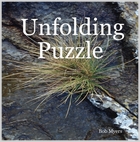 You’ve got neurons all up and down your alimentary canal. They monitor digestion and track enzyme levels. They control peristalsis. They give you that tight feeling in your stomach when you’re scared. And they’re responsible for bringing back up that bad burrito you had.
You’ve got neurons all up and down your alimentary canal. They monitor digestion and track enzyme levels. They control peristalsis. They give you that tight feeling in your stomach when you’re scared. And they’re responsible for bringing back up that bad burrito you had.
This is the “enteric nervous system” (ENS), dubbed the second brain by Dr. Michael D. Gerson, author of the book by the same name. It’s the neural equivalent of the second steering wheel at the back of a fire truck. Consisting of hundreds of millions of neurons, it’s a miniature version of the brain in your head, embedded along your entire digestive tract from esophagus to anus.
One hundred years ago, Dr. Byron Robinson, an early ENS researcher, waxed poetic in his book “The Abdominal and Pelvic Brain”:
…in the abdomen there exists a brain of wonderful power maintaining eternal, restless vigilance over its viscera. It presides over organic life. It dominates the rhythmical function of viscera…it has the power of a brain…it is the center of life itself.
The study of this abdominal brain has important real-world applications. The ENS has been tied to migraine headaches, autism, Alzheimer’s, and even depression—although you’d probably be depressed too if you had irritable bowel syndrome. Understanding the intelligence in the gastrointestinal tract could be key to solving these stubborn medical riddles. For instance, in one study a thorough bowel cleansing resulted in notable improvement in children suffering from autism.
Then there are the rarer diseases such as the horrifying Chagas disease found in Mexico and South America, where a parasite crawls under your skin, triggering an autoimmune response which attacks the ENS, eventually leading the intestines to self-destruct.
What are the implications for those of us interested in biology and God? Will enemas help propel us to enlightenment? I hereby christen this field neurogastroenterotheology, after “neurogastroenterology”, the term for study of the abdominal brain itself.
Religion is intimately connected with the digestive system. For instance, the three major monotheistic religions all have a tradition of fasting. This is commonly interpreted as an pseudo-ascetic practice, but could the real point be to give your abdominal brain a rest? Catholicism also calls its holy days “feasts”, and of course has communion, although that probably wouldn’t be enough food to kick the ENS into gear.
Zen aficionados don’t meditate on a full stomach—the common wisdom being that that ensures your stomach isn’t stealing blood flow from your real brain. But perhaps there is a more direct connection to the state of absorption. After all, many biological theories of meditation hold that the samadhi-like state derives from understimulation (or overstimulation, depending on who you ask) or the parasympathetic nervous system, or balance between it and the sympathetic nervous system. Well, the ENS is often regarded as the third non-cerebral nervous system, after the sympathetic and parasympathetic, so maybe it is involved in the pattern of lowered stimulus in meditation. In addition, the sympathetic and parasympathetic nervous systems are connected to the enteral nervous system; they are the pipeline over which it talks to the brain in our head, much like two networked computers, in one analogy.
Perhaps those Buddha statues with big fat stomachs are trying to tell us they had achieved intestinal satori. And the focus on the hara (stomach) in Zen is certainly no coincidence—except instead of focusing on it you can focus with it, now that you know it’s got a mind of its own.
Intriguingly, the digestive system is associated with temporal lobe epilepsy, which is in turn associated with religious-like behaviors such as thinking that you’re Jesus.
According to researchers:
Temporal lobe seizure activity usually arises in or involves the amygdala. It is not surprising, therefore, that patients who have seizures involving the temporal lobe have GI symptoms, since discharges arising in the amygdala can be transmitted to the gut via dense direct projections to the dorsal motor nucleus of the vagus. In addition, sympathetic pathways from the amygdala to the GI tract can be activated via the hypothalamus…there are direct sensory pathways from the bowel via the vagus nerve to the solitary nucleus of the medulla which is heavily connected to the amygdala. These can be activated during intestinal contractions.
Another researcher notes:
Another example of the abdominal connection in epilepsy is the aura which is common in certain types of epilepsy. For example, temporal lobe epileptic seizures frequently begin with an aura. In neurological terms, an aura is actually a mild seizure which precedes the primary seizure. It can be thought of as a warning that a seizure is about to happen. Most often, auras manifest as an altered consciousness or peculiar sensation. The most common aura is of vague gastric distress, ascending up into the chest.
All this is quite circumstantial, so we’ll have to add ENS-related topics to our program for neurotheology research. A better understanding of our gastro-brain might allow us to revise the meditation instructions Dogen gave us in Fukanzazengi for the first time in 750 years.
 Neuroimaging techniques are limited by their spatial and temporal resolution. fMRI has a spatial resolution of about 3-4mm. Now researchers have developed statistical techniques to narrow fMRI resolution down to less than a millimeter, fine enough to see the “orientation columns” in the primary visual cortex (V1), so named because each reacts to lines and edges at a particular orientation.
Neuroimaging techniques are limited by their spatial and temporal resolution. fMRI has a spatial resolution of about 3-4mm. Now researchers have developed statistical techniques to narrow fMRI resolution down to less than a millimeter, fine enough to see the “orientation columns” in the primary visual cortex (V1), so named because each reacts to lines and edges at a particular orientation.
 Religion is uniquely human.
Religion is uniquely human. As mentioned in
As mentioned in  750 years ago, Dogen repudiated religious discimination between the sexes, saying, “The desire to hear Dharma and the search for enlightenment do not necessarily rely on the difference in sex.”
750 years ago, Dogen repudiated religious discimination between the sexes, saying, “The desire to hear Dharma and the search for enlightenment do not necessarily rely on the difference in sex.” You’ve got neurons all up and down your alimentary canal. They monitor digestion and track enzyme levels. They control peristalsis. They give you that tight feeling in your stomach when you’re scared. And they’re responsible for bringing back up that bad burrito you had.
You’ve got neurons all up and down your alimentary canal. They monitor digestion and track enzyme levels. They control peristalsis. They give you that tight feeling in your stomach when you’re scared. And they’re responsible for bringing back up that bad burrito you had. Does Landmark Forum seem likely to affect your brain? If so, how? This question is an example of the
Does Landmark Forum seem likely to affect your brain? If so, how? This question is an example of the  I’ve often thought over the years of coming up with a new ideographic written language. Now I find a man named Charles K. Bliss has already done this, creating something called Blissymbols (or “Semantography”).
I’ve often thought over the years of coming up with a new ideographic written language. Now I find a man named Charles K. Bliss has already done this, creating something called Blissymbols (or “Semantography”). I’ve renamed this blog Numenware to highlight its evolving focus on neurotheology issues.
I’ve renamed this blog Numenware to highlight its evolving focus on neurotheology issues.